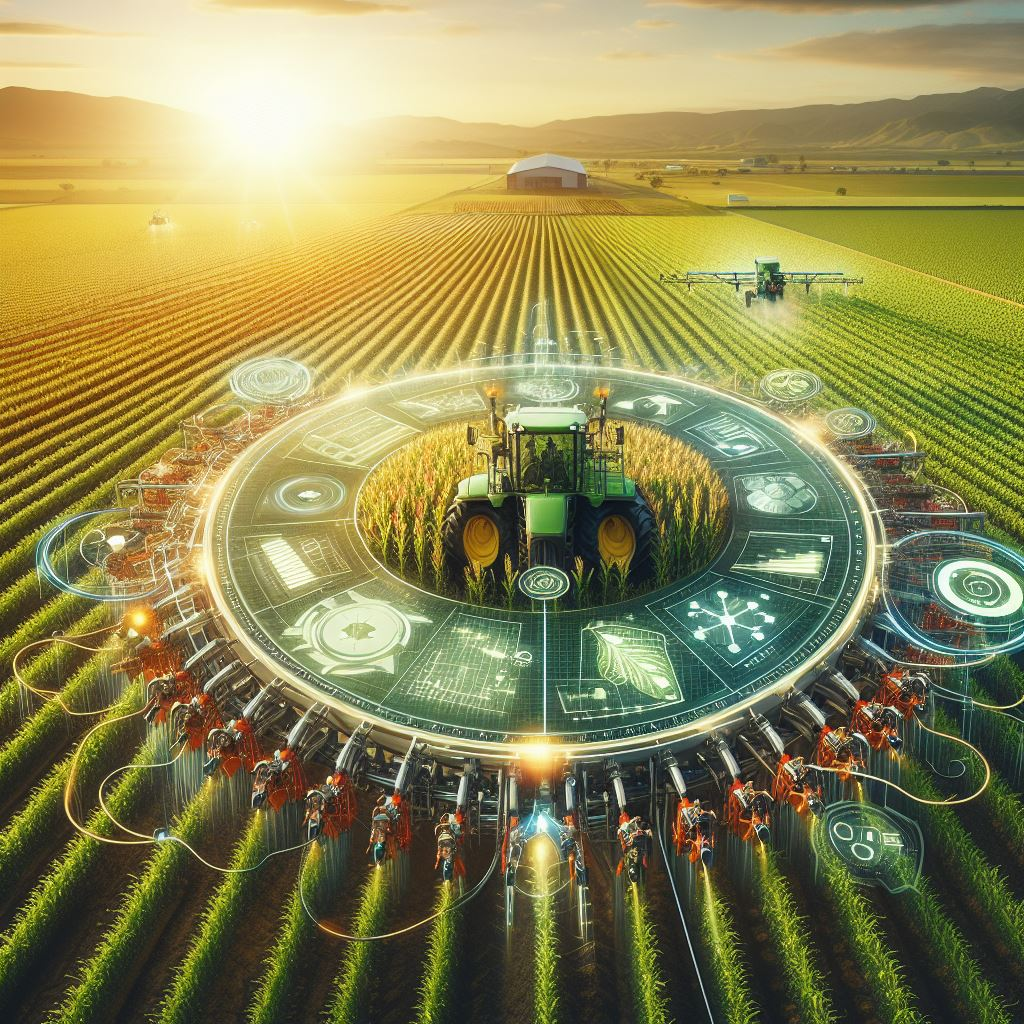Precision agriculture is a modern farming technique that uses technology, such as sensors, GPS mapping, and data analysis software, to optimize crop yields and reduce waste.
Precision agriculture is a modern farming technique that uses technology, such as sensors, GPS mapping, and data analysis software, to optimize crop yields and reduce waste. Precision agriculture is a farming method that utilizes technology to optimize crop yield and reduce waste.
Precision agriculture, a modern farming method involves using advanced technologies to improve the efficiency, yield, quality, profitability, and sustainability of farming practices. This methodology can be applied to both crop and animal farming and involves collecting, analysing, and processing data on various aspects of the production system, including soil, weather, crops, animals, pests, diseases, fertilizers, water, and more.
Several technologies enable precision agriculture, including GPS and GNSS. These systems help farmers locate their position in a field and create maps of the spatial variability of different variables.
Remote sensing is a technique that involves using sensors mounted on satellites, drones, planes, or vehicles to capture images or data of agricultural fields. This data can be used to measure the health of crops, soil moisture, weed infestation, nutrient status, and more. The technique is useful in gathering data on crop health, soil moisture, weed infestation, nutrient status, etc.
Variable rate technology (VRT) is a type of equipment that can vary the amount or type of input (such as seed, fertilizer, pesticide, water, etc.) applied to different parts of the field based on the data collected by sensors or maps. It is a useful tool in precision agriculture for optimal use of resources.
Real-time sensors can measure and wirelessly transmit data from soil, plants, or animals without human intervention.
There are software tools known as Decision Support Systems (DSS) that can assist farmers in analysing data gathered by sensors or maps, and offer recommendations for management decisions. Precision agriculture is a quickly developing field that provides numerous advantages for farmers and society alike. Despite this, it also encounters certain challenges such as high costs, insufficient infrastructure, concerns about data privacy and security, and ethical and social implications for society.
Precision agriculture can help the environment in many ways, such as:
- Precision agriculture helps farmers increase crop production and reduce the need for more land conversion. By optimizing the use of existing land and applying the right inputs, it reduces soil erosion, deforestation, biodiversity loss, and greenhouse gas emissions. A study found that precision agriculture technologies can increase crop production by 4%.
- Precision agriculture uses sensors and maps to help farmers apply inputs more accurately, reducing the use of fertilizer, pesticide, and water. This approach can prevent waste and minimize environmental harm. Studies show that it can increase fertilizer placement efficiency by 7% and reduce herbicide and pesticide use by 9%.
- Saving fuel and reducing emissions. Precision agriculture can help farmers reduce their fuel consumption and emissions by using equipment that can monitor and adjust their speed, route, and idling time. This can also save time and labour costs for farmers. For example, a study by the Association of Equipment Manufacturers found that farmers who use precision agriculture technologies achieve a 6% reduction in fossil fuel use.
Precision agriculture, a modern farming method helps the environment but faces challenges like high costs, lack of infrastructure, and ethical implications. More research is needed to understand its impacts.
Some disadvantages of precision agriculture are:
- High cost: Precision agriculture requires a lot of investment in new technologies, equipment, software, data analysis, and technical support. These costs may be prohibitive for many farmers, especially smallholders, who may not have access to credit, subsidies, or insurance.
- Lack of technical expertise: Precision agriculture involves complex and sophisticated systems that require a high level of skill and knowledge to operate and maintain. Many farmers may not have the necessary training, education, or experience to use these systems effectively and efficiently. They may also face difficulties in finding reliable and affordable service providers or consultants who can help them with precision agriculture.
- Not applicable or difficult for small land holdings: Precision agriculture is more suitable for large-scale and uniform farms that can benefit from economies of scale and spatial variability. For small and diverse farms, precision agriculture may not be feasible or cost-effective, as it may require more inputs and equipment per unit area. Moreover, small farmers may face challenges in accessing and sharing data, information, and markets that are essential for precision agriculture.
- Heterogeneity of cropping systems and market imperfections: Precision agriculture assumes that farmers can optimize their production based on the data and information they receive. However, in reality, farmers may face various constraints and uncertainties that limit their choices and outcomes. For example, farmers may have to deal with different crops, varieties, pests, diseases, soils, climates, policies, regulations, contracts, prices, etc., that affect their decisions and performance. Precision agriculture may not be able to capture or address all these factors adequately, hence conventional agriculture will remain in the run.
Disclaimer
The content presented in this article has been collected from multiple sources.
